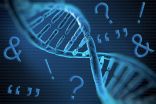(Press-News.org) WASHINGTON (Aug. 3, 2015)--A new analysis of early hominin body size evolution led by a George Washington University professor suggests that the earliest members of the Homo genus (which includes our species, Homo sapiens) may not have been larger than earlier hominin species. As almost all of the hows and whys of human evolution are tied to estimates of body size at particular points in time, these results challenge numerous adaptive hypotheses based around the idea that the origins of Homo coincided with, or were driven by, an increase in body mass.
In "Body Mass Estimates of Hominin Fossils and the Evolution of Human Body Size," published online in the Journal of Human Evolution, Mark Grabowski assistant research professor in the GW Center for the Advanced Study of Human Paleobiology, and his co-authors provide the most comprehensive set of body mass estimates, species averages and species averages by sex for fossil hominins to date. Produced using cutting-edge methodology and the largest sample of individual early hominin fossils available, analysis of their results shows that early hominins were generally smaller than previously thought and that the increase in body size occurred not between australopiths and the origins of Homo but later with H. erectus (the first species widely found outside of Africa).
"One of our major results is that we found no evidence that the earliest members of our genus differed in body mass from earlier australopiths (some of the earliest species of hominins)," said Dr. Grabowski, who is also a Fulbright scholar at the Centre for Ecological and Evolutionary Synthesis at the University of Oslo. "In other words, the factors that set our lineage apart from our earlier ancestors were unrelated to an increase in body size, which has been the linchpin of numerous adaptive hypotheses on the origins of our genus."
"There are several untested assumptions about the origin of Homo," said Bernard Wood, University Professor of Human Origins at GW, who was not an author on the study. "This study debunks the one that suggests that until the origin of our own genus, for one reason or another - and the usual explanation is not enough meat in the diet - all early hominins were small-bodied. This elegant study shows that body size did not make a sharp uptick with the arrival of early Homo. My prediction is that this is just the first of many preconceptions about early Homo that will be debunked in the next few years."
Until now, anthropologists have generally relied on estimates of hominin body mass presented in a paper by Henry M. McHenry in 1992. Since then, many more fossils have been discovered and researchers better understand the complexities of human evolution. Dr. Grabowski and his co-authors build on and update McHenry's results and apply new and novel methods to analyze a comprehensive fossil data set. The researchers hope their results will be the new standard for fossil hominin body estimates.
In addition, Dr. Grabowski and the co-authors found that the level of size difference between males and females (sexual dimorphism) appears to have only slightly decreased from earlier hominin species by the time of early H. erectus, and only decreased to modern human-like low levels later in our lineage. High levels of dimorphism such as in gorillas may correlate with more "harem"-like social structures. This result should give pause to evolutionary models that see a more modern human-like monogamous social structure evolving early in our lineage.
INFORMATION:
The paper was co-authored by Kevin Hatala, former graduate student at GW, William Jungers, professor of anatomical sciences at Stony Brook School of Medicine, and Brian Richmond, curator of human origins at the American Museum of Natural History.
The Columbian College of Arts and Sciences
Established in 1821 in the heart of the nation's capital, the George Washington University Columbian College of Arts and Sciences is the largest of GW's academic units. It encompasses the School of Media and Public Affairs, the Trachtenberg School of Public Policy and Public Administration and more than 40 departments and programs for undergraduate, graduate and professional studies. The Columbian College provides the foundation for GW's commitment to the liberal arts and a broad education for all students. An internationally recognized faculty and active partnerships with prestigious research institutions place Columbian College at the forefront in advancing policy, enhancing culture and transforming lives through research and discovery.
COLUMBIA, Mo. - Coaches and trainers strive to keep their players healthy so they can perform at their maximum potentials. Injury restrictions, or limits on athletes' physical activity due to illnesses or injuries, can keep athletes on the bench for a game or even an entire season. Now, University of Missouri researchers have found college football players are more likely to experience injuries during test weeks than during training camp. The effects of academic stress on injury occurrences are even more pronounced among starting players, the researchers found.
"Stress ...
Many studies have been conducted on the dangers of endocrine disrupting chemicals that mimic or block estrogen, the primary female hormone. Now new research shows that similar harm can be done by chemicals that affect male hormones, or androgens.
Natural androgenic steroids excreted by humans and animals and synthetic androgenic steroids widely used in daily life and livestock are important androgenic endocrine disrupting chemicals because of their constant discharge into the aquatic environment via wastewater. A new Environmental Toxicology & Chemistry study shows that ...
COLUMBIA, Mo. - Public affairs experts say easy and constant access by citizens to important government information, referred to as government transparency, is vital for good governance as well as the perception by citizens that the government is trustworthy. However, many local governments suffer from a lack of transparency. Now, University of Missouri researchers have found that county governments in densely populated urban areas tend to be more transparent on their official websites if their citizens have good Internet access. On the other hand, in counties with large ...
An analysis of data on more than 41,000 Danish women who received assisted reproductive fertility treatment shows that unsuccessful treatment is not linked with an increased risk of clinically diagnosed depression compared with successful treatment.
The analysis also found that becoming a mother is an important trigger of clinically diagnosed depression after childbirth among women who conceive after fertility treatment, even though the child is long-awaited. The stress of having a new child thus seems to matter more in terms of developing clinical depression than undergoing ...
A team of New York University scientists has developed a technique that prompts microparticles to form ordered structures in a variety of materials. The advance, which appears in the Journal of the American Chemical Society (JACS) as an "Editors' Choice" article, offers a method to potentially improve the makeup and color of optical materials used in computer screens along with other consumer products.
The work is centered on enhancing the arrangement of colloids--small particles suspended within a fluid medium. Colloidal dispersions are composed of such everyday items ...
Women are more likely to smoke during pregnancy when they live in areas where socio-economic resources are lower but also where smoking is more socially accepted, according to new study from Rice University's Kinder Institute for Urban Research.
"Where There's Smoke: Cigarette Use, Social Acceptability and Spatial Approaches to Multilevel Modeling" will appear in the September edition of Social Science and Medicine. The study examines how local factors impact health behavior.
Heather O'Connell, a postdoctoral research fellow at Rice's Kinder Institute, finds contextual ...
San Francisco, CA - Since the classical studies of Jacob and Monod in the early 1960s, it has been evident that genome sequences contain not only blueprints for genes and the proteins that they encode, but also the instructions for a coordinated regulatory program that governs when, where and to what extent these genes and proteins are expressed. The execution of this regulatory code is what allows for the creation of very different cell- and tissue-types from the same set of genetic instructions found in the nucleus of every cell. A recent study published in PNAS (July ...
Nanotechnology could one day provide an inhaled vehicle to deliver targeted therapeutic genes for those suffering from life-threatening lung disorders.
Researchers may have discovered first gene delivery system that efficiently penetrates the hard-to-breach human airway mucus barrier of lung tissue.
Researchers at the Johns Hopkins University School of Medicine, Johns Hopkins University Department of Chemical and Biomolecular Engineering, and Federal University of Rio de Janeiro in Brazil have designed a DNA-loaded nanoparticle that can pass through the mucus barrier ...
The field of medical genetics is swiftly evolving. It's a period of rapid scientific discovery, new technologies and subsequent translation into medical practice, public policy and public health. But what role should the Medical Genetics specialist have since genetics impacts all patients and specialties in some way? In an effort to clearly define the changing role of the specialty of Medical Genetics and the distinction between Medical Geneticists and other genetics healthcare professionals, the American College of Medical Genetics and Genomics (ACMG) has has just released ...
Various sight recovery therapies are being developed by companies around the world, offering new hope for people who are blind. But little is known about what the world will look like to patients who undergo those procedures.
A new University of Washington study seeks to answer that question and offers visual simulations of what someone with restored vision might see. The study concludes that while important advancements have been made in the field, the vision provided by sight recovery technologies may be very different from what scientists and patients had previously ...

